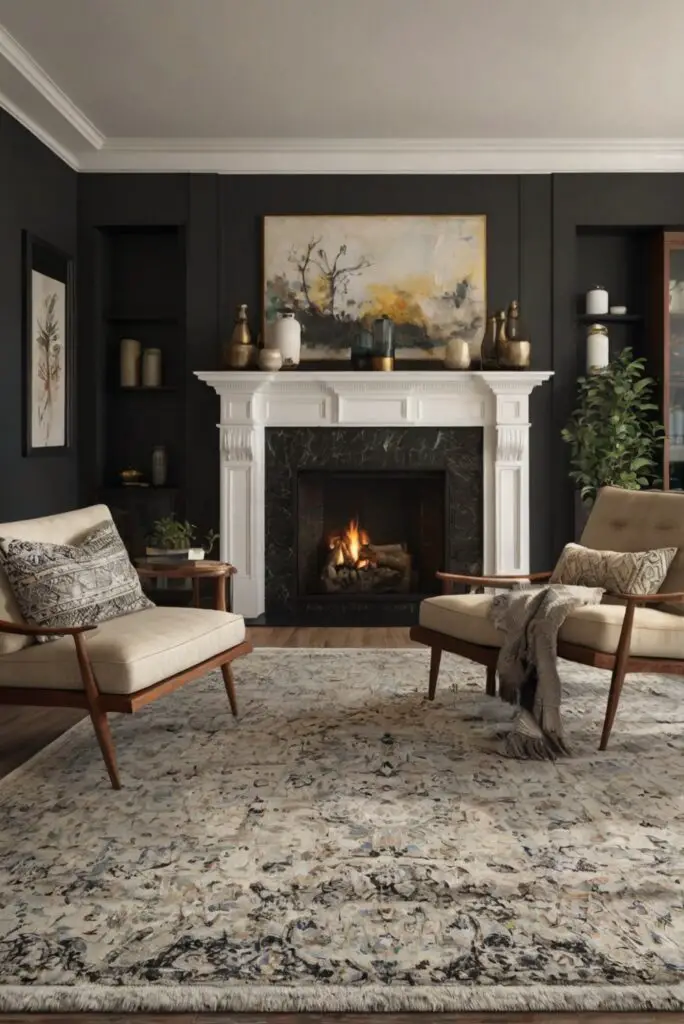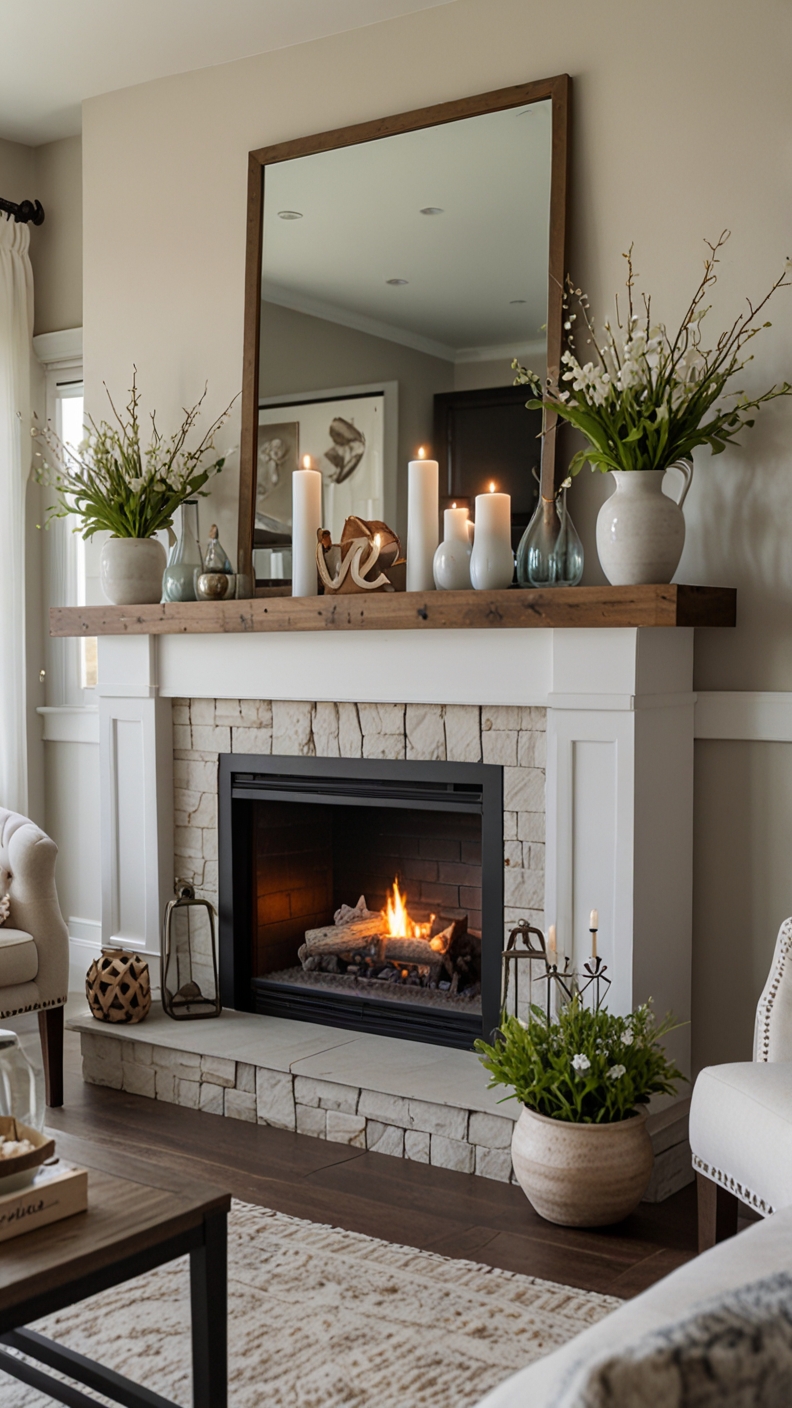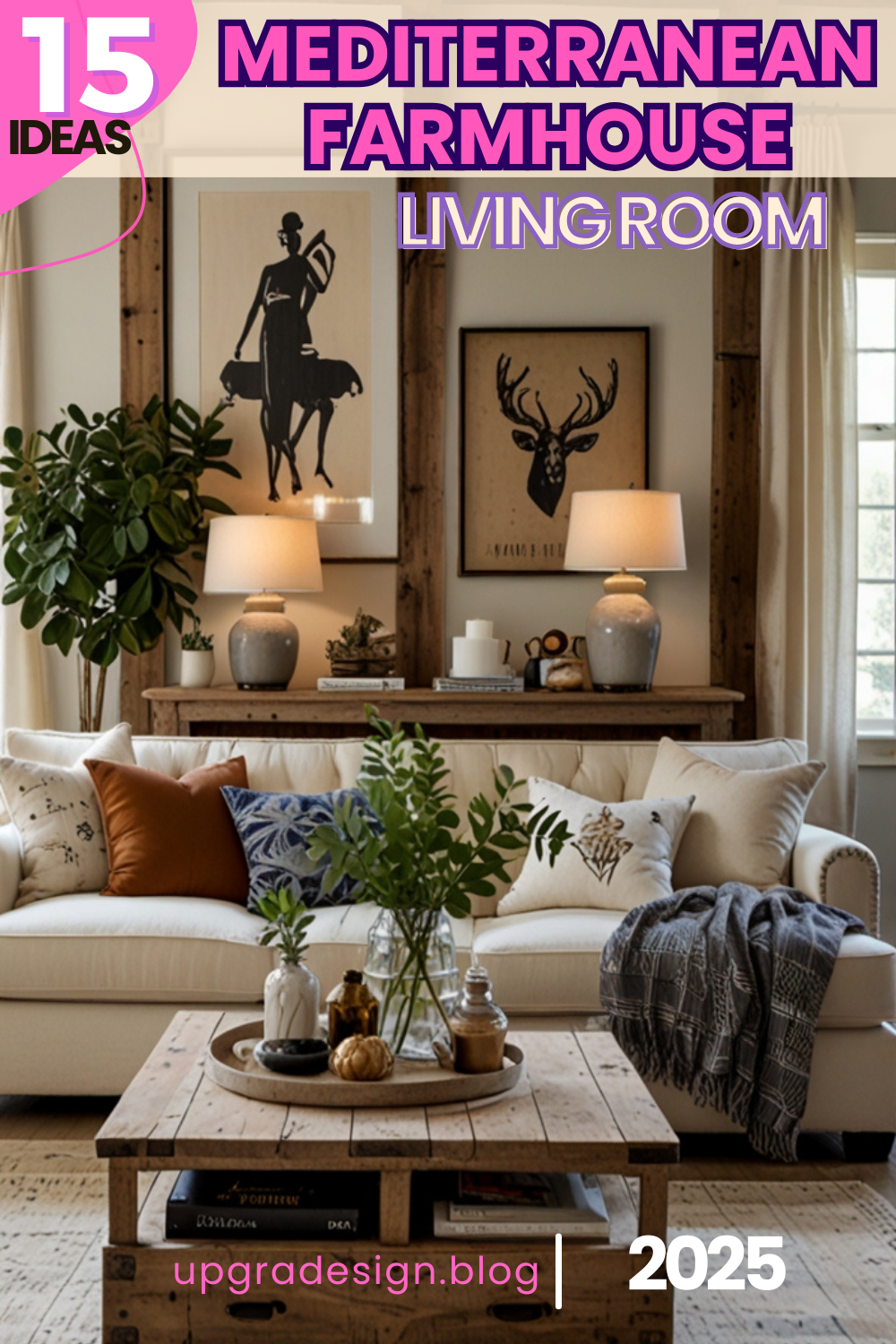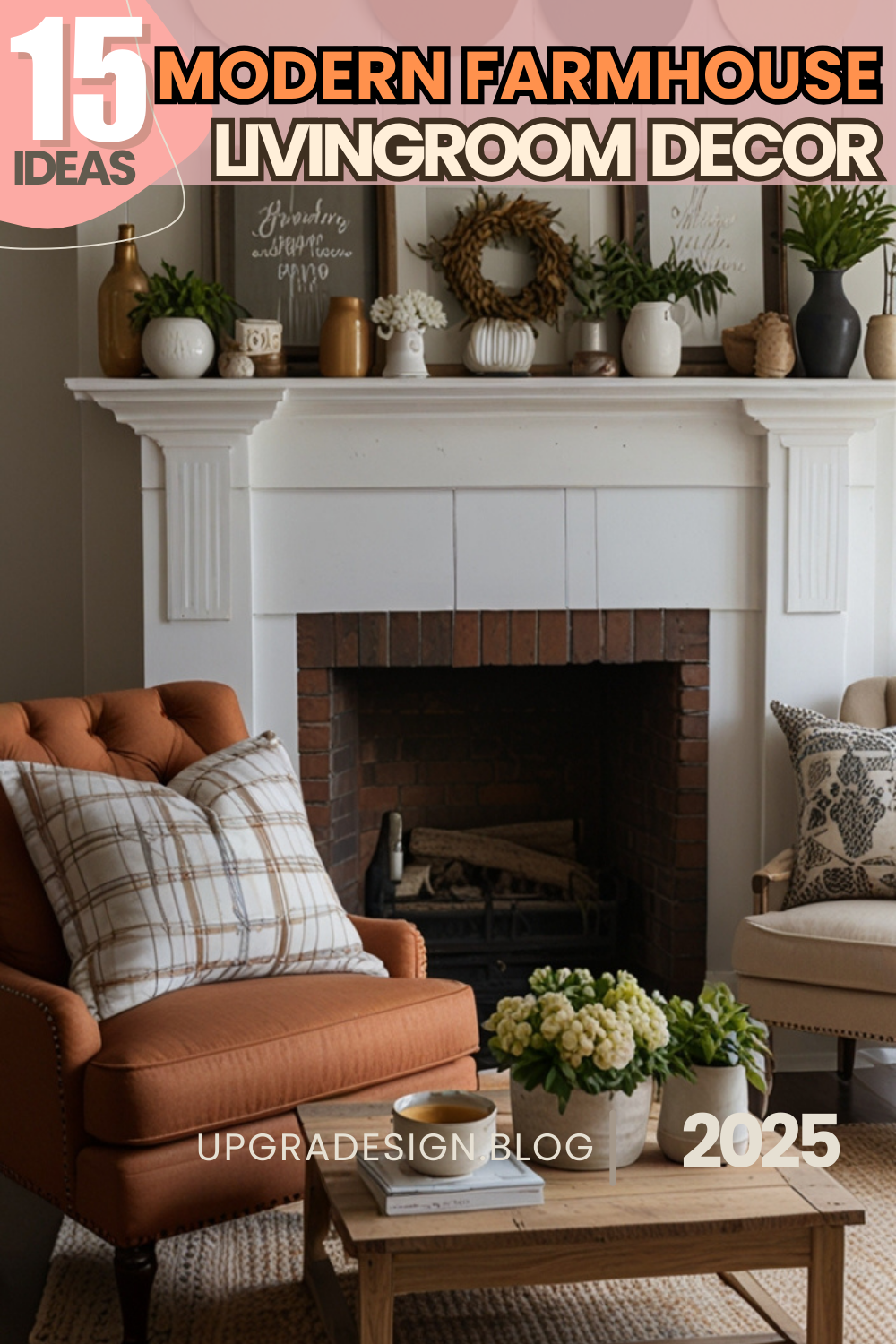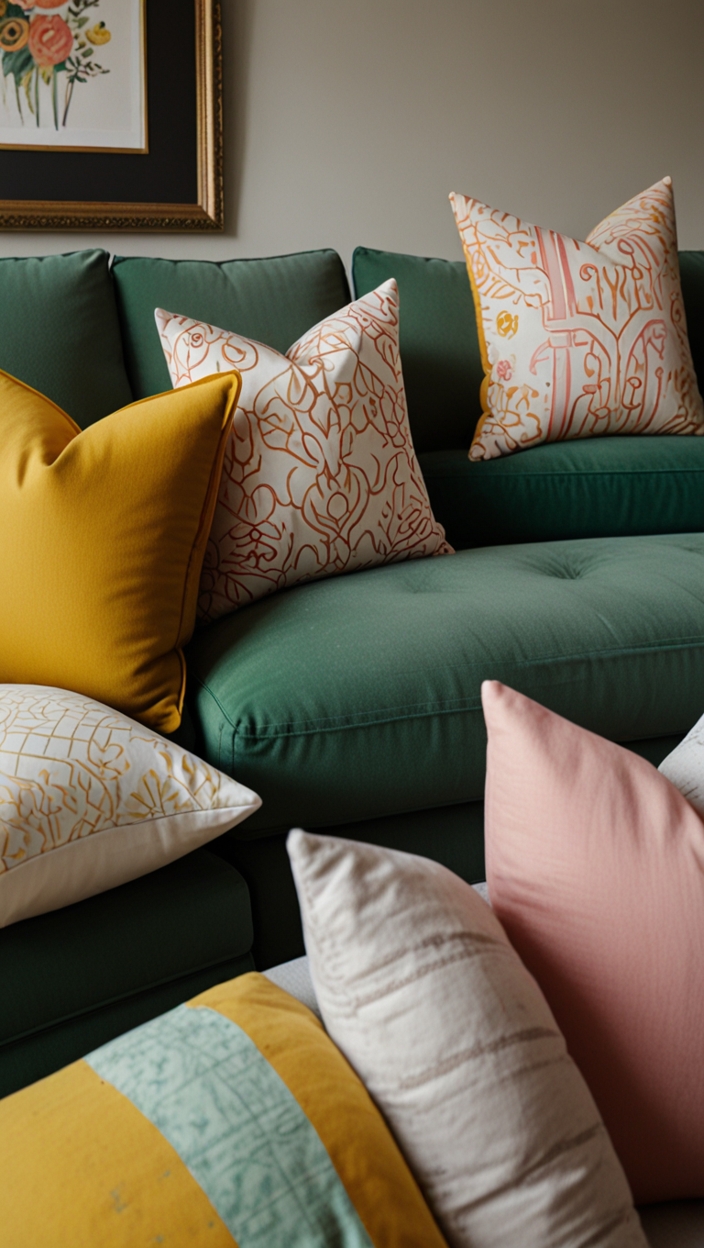Discover the best rug size for a small living room in this daily routine post, where we share expert interior designer tips for selecting the perfect fit.
**How to Select the Perfect Rug Size for a Small Living Room?**
In a small living room, choosing the right rug size is crucial for maximizing space and creating a balanced aesthetic. Start by measuring your room and considering the furniture placement. A rug that fits under the front legs of your sofas and chairs can make the room appear larger. Alternatively, a rug that covers the entire seating area can create a cozy feel. Remember to leave at least 10-20 inches of bare floor between the rug and the walls for a spacious look. Opt for lighter colors and patterns to visually expand the room. Always measure twice and choose a rug that complements your overall interior design style.
How to measure the perfect rug size for a small living room?
My Lovely Spring Paint for 2025
Ready for a Spring Makeover? Explore the Freshest 2025 Paint Trends!
White Sage/Green SW Pistachio green Soft blue Honeysweet/Orange Pink Sugar Sage Tint BMAs an Amazon Associate, I may earn a commission from qualifying purchases at no extra cost to you.
Determining the ideal rug size for a small living room is crucial to achieve a balanced and visually appealing space. Here are some important steps to measure the perfect rug size:
– **Define the seating area:** First, decide on the area of the living room where you want to place the rug. Typically, the rug should cover the central seating area where most activities take place.
– **Use masking tape:** Outline the desired rug size on the floor with masking tape to visualize how the rug will fit in the space and to determine the dimensions that work best.
My fAV Spring DECOR for 2025
Discover Spring’s Best 2025 Decor Combinations – Perfect for Any Room!
Oversized Indoor Plants White Curved Sofas Rugs BOH Brown Cream Moroccan Hype Boho Rug Outdoor Patio Furniture Sets Topfinel Pillow CoversAs an Amazon Associate, I may earn a commission from qualifying purchases at no extra cost to you.
– **Leave enough space:** Ensure there is enough space between the edges of the rug and the walls to create a border. A common rule is to leave about 18 inches of floor space between the rug and the walls.
– **Consider furniture placement:** If you have furniture in the room, make sure all the front legs are on the rug to create a cohesive look and tie the furniture arrangement together.
– **Room shape:** For a square room, a square rug can work well, while for a rectangular room, consider a rectangular rug that complements the room’s proportions.
– **Balance:** Aim for a balanced look where the rug is proportionate to the size of the room and complements the rest of the décor without overpowering the space.
What is the ideal rug size for a small living room with furniture?
When choosing a rug size for a small living room with furniture, it is essential to strike a balance between the size of the rug and the placement of the furniture. Here are some guidelines to help you select the ideal rug size:
– **Front legs on the rug:** Ensure that the front legs of all furniture pieces in the seating area are placed on the rug. This helps anchor the furniture and creates a cohesive look.
– **Allow for movement:** Leave enough space around the rug for easy movement and to prevent the rug from looking cramped or overwhelming in the room.
– **Size options:** Consider a rug size that allows for at least 8-10 inches of floor space between the rug and the furniture to avoid a cluttered appearance.
– **Shape matters:** The shape of the rug should complement the furniture arrangement. For example, a round rug can soften sharp angles in the room, while a square or rectangular rug can define the seating area.
– **Custom sizes:** If standard rug sizes do not fit your space perfectly, consider a custom size rug that can be tailored to your specific measurements for a seamless look.
Can I use multiple rugs in a small living room?
Yes, using multiple rugs in a small living room can be a practical and stylish solution to add dimension, define different areas, and create visual interest. Here are some tips for effectively using multiple rugs in a small living room:
– **Layering:** Layering rugs can be a great way to incorporate different textures, patterns, and colors in the room. Use a larger rug as the base and layer a smaller rug on top to create depth.
– **Define areas:** Use rugs to define separate areas within the living room, such as a seating area, a reading nook, or a dining space. Each rug can delineate a specific function in the room.
– **Coordinate designs:** Ensure that the multiple rugs in the room complement each other in terms of color palette, style, and texture to create a cohesive look.
– **Size variation:** Opt for rugs of varying sizes to create visual interest and balance in the room. Consider using a larger rug for the seating area and smaller rugs for accents.
– **Spacing:** Leave enough space between the multiple rugs to avoid a cluttered or crowded look. Maintain a harmonious flow by carefully placing and spacing the rugs in the room.
How to ensure the rug doesn’t overwhelm a small living room space?
To prevent a rug from overwhelming a small living room space, consider the following strategies:
– **Size matters:** Choose a rug size that is proportionate to the size of the room. Avoid selecting a rug that is too large or too small for the space, as it can make the room appear unbalanced.
– **Light colors:** Opt for light-colored rugs in smaller living rooms to create an illusion of space and airiness. Light hues can visually expand the room and make it feel more open.
– **Minimalist patterns:** Select rugs with minimalist patterns or solid colors to prevent the rug from overpowering the room. Simple designs can add interest without dominating the space.
– **Consider shape:** Depending on the layout of the room, choose a rug shape that complements the furniture arrangement. Rectangular rugs often work well in small living rooms, but round or oval rugs can soften angular spaces.
– **Furniture placement:** Ensure that the rug accommodates the furniture layout without obstructing pathways or creating a cramped feel. Arrange the furniture so that it complements the rug size and placement.
– **Layering:** If you prefer a larger rug but are concerned about overwhelming the space, consider layering a smaller rug on top to add interest without compromising the room’s balance.
What are the benefits of using a rug in a small living room?
Using a rug in a small living room offers several benefits that can enhance the space and create a cozy and inviting atmosphere:
– **Visual appeal:** Rugs can add color, texture, and pattern to a small living room, instantly transforming the look and feel of the space. They serve as decorative elements that tie the room together.
– **Define spaces:** Rugs help define specific areas within the living room, such as the seating area, the dining space, or a reading nook. By delineating these zones, rugs create a sense of organization and purpose in the room.
– **Comfort:** Adding a rug to the floor increases comfort underfoot, providing a soft and warm surface to walk on. This is especially beneficial in small living rooms where there may be limited seating options.
– **Sound insulation:** Rugs can help reduce noise levels in a small living room by absorbing sound and minimizing echoes. They create a sense of coziness and warmth by softening the acoustics of the room.
– **Protection:** Rugs offer protection for the flooring beneath them, especially in high-traffic areas. They can prevent scratches, scuffs, and damage to the floor, extending its lifespan and maintaining its condition.
– **Versatility:** Rugs come in a wide range of sizes, shapes, colors, and patterns, making them versatile décor items that can be easily swapped or updated to refresh the look of the living room.
What is the best material for a rug in a small living room?
When selecting a rug material for a small living room, consider factors such as durability, comfort, maintenance, and style. Some popular materials that work well in small living rooms include:
– **Wool:** Wool rugs are known for their durability, softness, and natural stain resistance. They are easy to clean and maintain, making them ideal for high-traffic areas in small living rooms.
– **Cotton:** Cotton rugs are lightweight, affordable, and easy to clean, making them a practical choice for small living rooms. They come in a variety of colors and patterns, adding a casual and relaxed vibe to the space.
– **Synthetic fibers:** Materials like polyester, nylon, or polypropylene are synthetic fibers that offer stain resistance, durability, and affordability. They are suitable for small living rooms with heavy foot traffic or for households with pets and children.
– **Natural fibers:** Seagrass, jute, sisal, and bamboo are natural fiber rugs that add texture and a touch of organic warmth to a small living room. They are eco-friendly options that work well in casual and coastal-inspired spaces.
– **Silk:** Silk rugs are luxurious, soft, and have a lustrous sheen that can elevate the look of a small living room. While more delicate than other materials, silk rugs add a touch of elegance and sophistication to the space.
– **Blend:** Consider blended materials like wool and viscose or wool and silk for a rug that combines the best qualities of each material. Blended rugs offer a balance of durability, softness, and sheen for a stylish and practical choice.
How to choose a rug color that complements a small living room’s décor?
Selecting the right rug color is essential to complement the existing décor and enhance the overall ambiance of a small living room. Here are some tips for choosing a rug color that harmonizes with the room’s style:
– **Neutral tones:** Neutral colors like beige, gray, ivory, or taupe are versatile choices that can blend seamlessly with various design schemes. They create a calming backdrop and allow other elements in the room to stand out.
– **Accent color:** If the living room has a neutral color palette, consider selecting a rug with a pop of color that ties in with the room’s accents like throw pillows, curtains, or artwork. This can add visual interest and personality to the space.
– **Match or contrast:** Choose a rug color that either matches the dominant color in the room for a harmonious look or contrasts with the existing colors for a bold and statement-making effect. Consider the mood and style you want to evoke in the space.
– **Patterned rugs:** If the furniture and décor in the living room are primarily solid-colored, opt for a patterned rug to introduce depth and visual texture. Geometric, floral, or abstract patterns can liven up the room and make a statement.
– **Light vs. dark:** Light-colored rugs can make a small living room feel more spacious and airy, while dark-colored rugs can add warmth and coziness. Consider the natural light in the room and the mood you want to create when choosing between light and dark hues.
– **Size of the room:** Take into account the size of the living room when choosing a rug color. In a small space, a light-colored rug can brighten up the room and create a sense of openness, while a dark-colored rug can anchor the space and add depth.
Key Takeaways
– **Seating Area:** Define the central seating area in the small living room for rug placement.
– **Front Legs:** Ensure that the front legs of furniture are placed on the rug for a cohesive look.
– **Layering:** Consider layering multiple rugs to add depth and dimension in the room.
– **Visual Appeal:** Rugs enhance the décor, define spaces, and provide comfort in a small living room.
– **Material:** Choose durable and stylish materials like wool, cotton, synthetic fibers, or natural blends.
– **Color Palette:** Select rug colors that harmonize with the room’s décor and create the desired ambiance.

